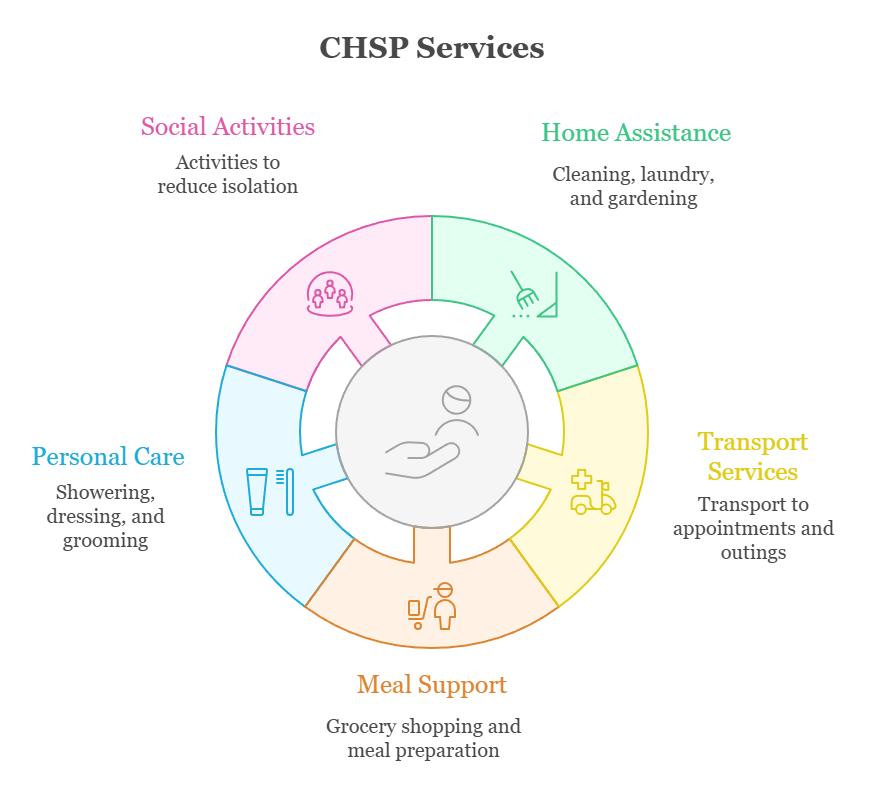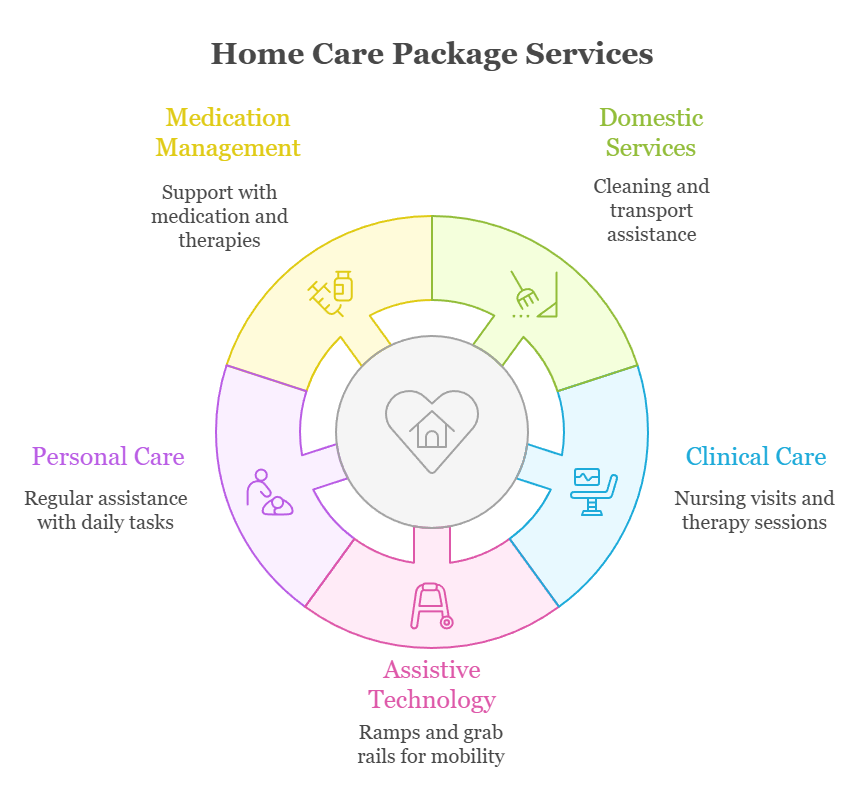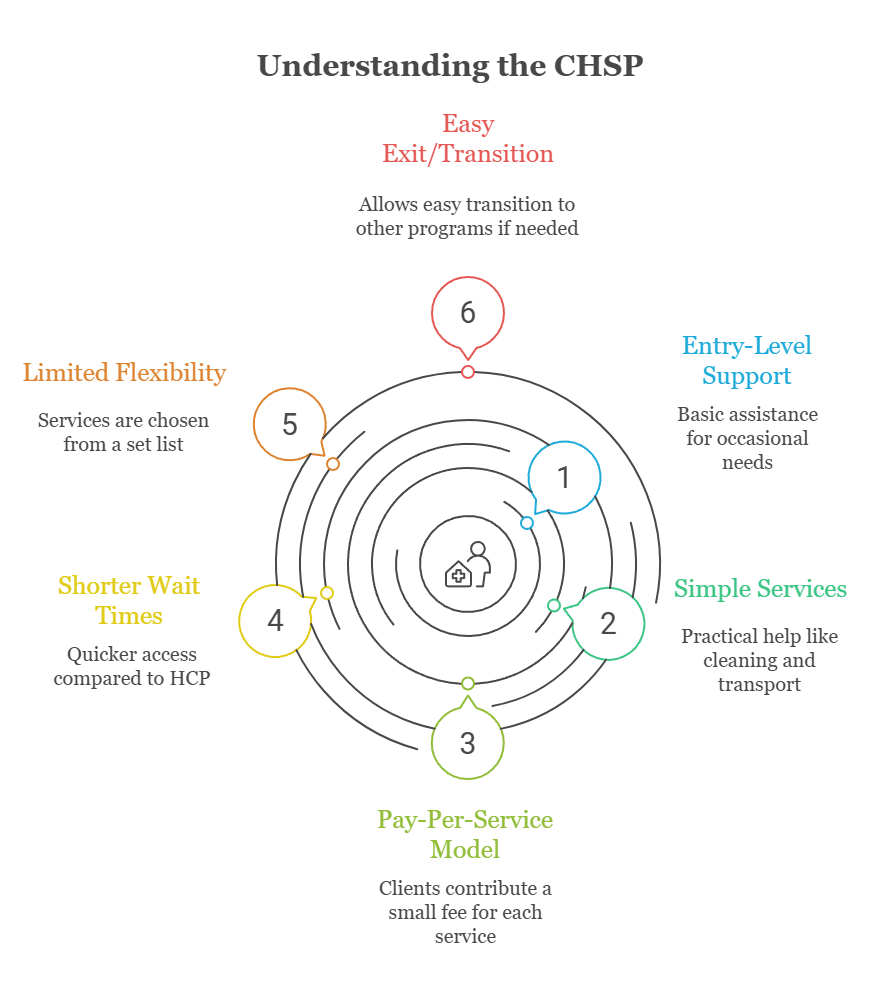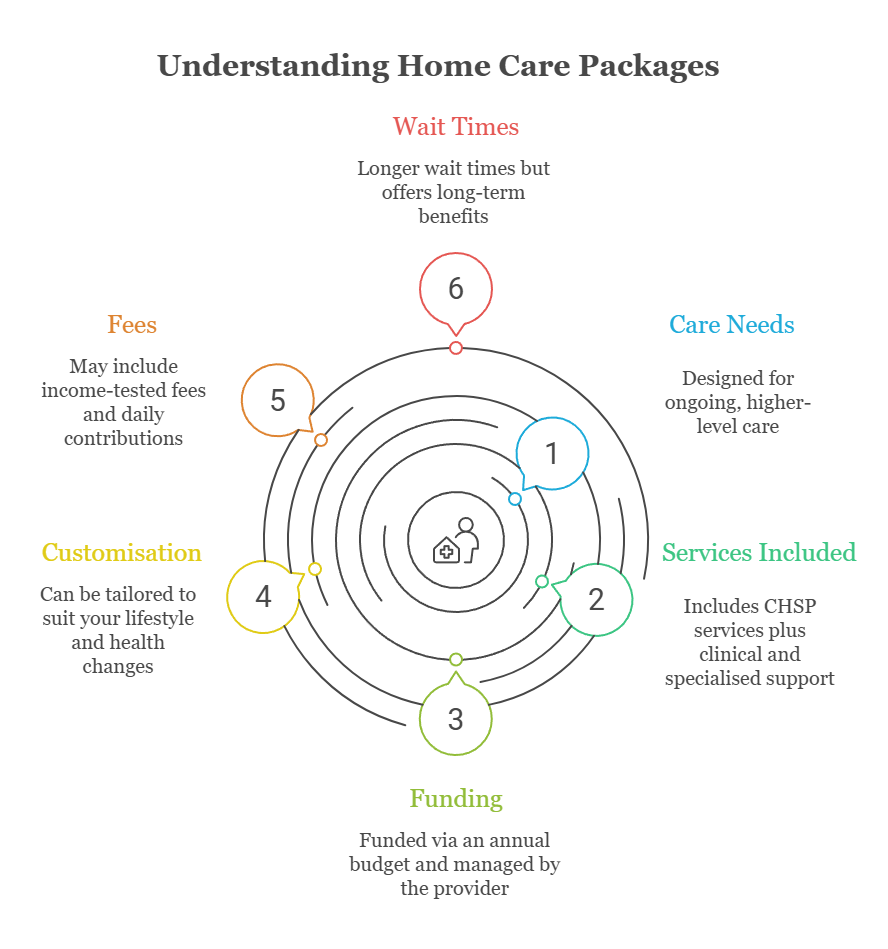By
Haisey Home Care
Updated on: August 7, 2025
•
x min read
The Commonwealth Home Support Programme vs. Home Care Packages - learn the key differences, services, and which option best fits your aged care needs.

Summary: Choosing between the Commonwealth Home Support Programme (CHSP) and Home Care Packages (HCP) comes down to your level of need, budget, and long‑term care goals. CHSP offers entry‑level, pay‑per‑service support for older Australians. It's for those who need occasional help with daily tasks like cleaning, transport, or meal preparation. HCPs provide larger, flexible funding packages. It's for older people requiring ongoing or complex care, including nursing, allied health, and home modifications.
Australian families caring for an older loved one have a few options for in-home care. Making this decision can feel overwhelming when you don't know all the details.
Two programs worth considering are the Commonwealth Home Support Programme (CHSP) and Home Care Packages (HCP).
Understanding the difference between these two programs is key. The right choice ensures your ongoing needs are met as they change and evolve.
At Haisey Home Care, we've helped countless families understand their options. Many clients begin their journey feeling unsure of which program is better.
Through guidance and planning, families often discover that starting with CHSP and transitioning to HCPs is the most practical path.
This approach helps them maintain comfort. It also supports safety, stability, and independence in the long term.
If you want to know more about these two aged care programs, keep reading.
The Commonwealth Home Support Programme is a flexible, entry-level aged care program.
It provides small amounts of support to older Australians. It's also funded by the government.
The CHSP is ideal if you just need a little help to stay safe and independent at home.
Services are simple and practical, designed to help with everyday tasks. This program is pay-as-you-go, meaning you contribute a small amount for each service.
It's often the first step into aged care support.
Examples of CHSP services include:

Before you begin CHSP, a My Aged Care assessment is required to confirm your eligibility.
Most clients find CHSP to be low-cost and highly accessible. However, the services can be less flexible than what a Home Care Package offers.
The Australian Government also funds the Home Care Package program.
HCPs are designed to support older people with more complex care needs than those the CHSP can accommodate.
There are four levels of Home Care Packages, according to the level of support needed:
An Aged Care Assessment Team (ACAT) determines which level is appropriate. The evaluation is based on a face-to-face assessment.
Home Care Packages can be used for a wide variety of supports, including (but not limited to):

When choosing between these two government-funded programs, it's important to know the main differences.
Here's what you should know about the Commonwealth Home Support Programme (CHSP):

Here's what you need to know about Home Care Packages:

Most people begin with CHSP when they only need small amounts of help. They then move to HCP when they need daily or clinical support.
Our team handles the transition process for a smooth experience.
Before choosing a program, think about your current lifestyle, health, and future needs.
Ask yourself:
If you only need occasional help, the CHSP might be a better option for you. But, if you have daily or complex care needs, HCPs are a wiser choice.
Home Care Packages might also be for you if you:
If you're not sure if you'd be eligible for HCPs, you can use My Aged Care's eligibility checker to get a better idea.
If you're still unsure which program to choose in the future, we've got good news for you. Later this year, both CHSP and HCP are set to merge into the Support at Home Program.
From 1 November 2025, the Support at Home Program will include:
By 1 July 2027, the CHSP will also be integrated into the single system.
Benefits of this new program will include:
Haisey Home Care will help clients transition seamlessly, protect their funding, and update care plans under the new model.
You can read more about the Support at Home Program here.
CHSP is entry-level and pay‑as‑you‑go, while HCP is comprehensive, with a full annual budget and care coordination. This means CHSP suits people who only need occasional help, whereas HCP is ideal for those requiring consistent or higher-level support.
CHSP is usually cheaper for occasional services. HCP provides more funding for higher needs, but can include income‑tested fees. The right choice often depends on how frequently you need help and whether you need clinical or specialised services.
You can upgrade from CHSP to HCP and eventually to Support at Home without losing access to services. Planning your transition early helps avoid service gaps and ensures you receive the right level of care as your situation evolves.
If you have been approved for the higher-level Home Care Package, you might have a long waiting period. In this case, you may be able to access a lower-level package alongside CHSP. This combination of services is often referred to as a "blended care" approach.
While the CHSP might be a better option for many, Home Care Packages offer more comprehensive services for elderly people.
With a reliable Home Care Package provider, like Haisey Home Care, you can relax at home, knowing all your care needs will be met.
If you'd like any more information on Home Care Packages, don't hesitate to message our friendly customer care team. We'll get right back to you!
{{cta}}
Chat with us to learn more about how we can help you. Book in a free, no obligation in-home consultation.
